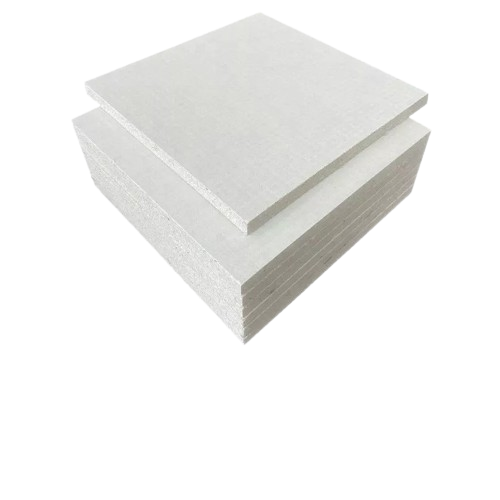
The perfect replacement for plywood & other wood-based sheets as a strong and stable background on which to tile.

Magnesium oxide board (also called mgo Board, magnum board, dragon board, MGO panels and so on is an interesting building material, with properties that give advantages in many construction structures. MGO BOARD contributes to a more efficient, profitable, environmentally, and health-friendly construction production. It has excellent fire and sound properties, sensitivity to moisture, very shock-resistant and produced entirely without environmentally and health-hazardous raw materials. This board is very easy to process and can be advantageously cut and broken as a plasterboard.
TileRite MAG BOARD is mainly made of magnesium oxide, magnesium sulphate or magnesium chloride, perlite, and wood fibre. As reinforcement, Mag Board is using the high-quality alkaline glass fibre mesh in the boards. Production takes place through a process, where water is added to the material and the curing takes place naturally without heat supply or other processing. This production ensures minimal energy consumption and a very low impact on the environment.


In many applications, Mag Boards can be used in the same ways as gypsum and Portland cement sheathings. The substitution is not fully direct in terms of sheet thicknesses, fastening methods, and joint treatments, but is very similar. This makes Mag Board an easy product to use. The possible uses of Mag Board are vast, and some of them include:
• In heat insulation as an exterior side coating
• In partition wall systems in interior locations (6-2mm)
• In construction of suspended ceilings (6-10mm)
• Raised floor construction (14mm and above)
Used as roof sheathing panels (12-16mm)
In the construction of interior and exterior walls, floor and ceiling of light steel prefabricated buildings
Fire protection of heavy steel buildings
• In construction of schools, hospitals, hotels, residences
• In construction of interior and exterior walls, floors, and ceilings of building site offices, hangars, mess, sleeping quarters
• In cold storage
• In furniture manufacturing (fireproof doors, counters, cupboards, etc)
• As supporting element under flooring, over-ground concrete

• Substrate must be clean, level, and free of defects.
• Apply mortar to the substrate with a 6mm notched trowel.
• Lay board over mortar bed rough side up; leave a 3mm gap between boards; press board fully into the mortar bed.
• Stagger joints of board. Do not put the board joint directly over the substrate joint.
• Fasten to the substrate with screws or nails. Do not fasten closer than 10mm to the edge; fastener heads should be flush with the surface of the board, do not recess the fastener head.
The fastener spacing is 200mm in both directions.
• Apply fibreglass cement board tape over joints; apply latex modified adhesive over tape, filling all joints fully.
• Allow to dry, apply tile with latex modified adhesive or porcelain tile adhesive according to the tile manufacturer’s instructions. Do not use ceramic tile adhesive.
Use the correct fastener type. Type S Steel Studs, minimum length 48mm – Type W Wood Studs, minimum length 64mm
FAQ’s
Q. Do I need to prime MAGBOARDS before tiing?
A. Priming is usually carried out at the recommendation of the tile adhesive manufacturer. Priming is not usually needed when using a latex-modified adhesive however, it is always advisable to prime if using a cement-based adhesive.
Q. How Do I Fix Magboards to the framework or masonry walls?
A. Install horizontally in a staggered pattern. Use the rough side to tile onto. For timber framework use (alkali resistant) Stainless Steel, Hot dipped galvanized screws or zinc plated screws. Screws must have counter-sinking heads. Never over screw keep heads flush with the board. Ensure fixings are a minimum of 20mm from the bottom and 15mm from the sides at 300mm intervals. On masonry use high-strength cartridge adhesive to provide initial adhesion then fix with 6mm x 60mm s/steel screws into wall plugs.
Q. How Do I Fix Magboards to Floors?
A. Stagger joints of the board. Do not put the board joint directly over the substrate joint. Lay the rough side up for tiling. Leave a 3mm gap between floor & Wall edges and board joints. For Solid floors apply flexible tile adhesive to substrate using a 6mm notch trowel. For timber floors, fix the boards at a maximum of 300mm centers using a countersunk (alkali-resistant screws).
Q. Can I Use MAGBOARDS in a wetroom?
A. Yes, but it must be tanked with an appropriate tanking kit.
Q. Why should I use jointing tape? and what should I use?
A. The joint tape helps tie the boards together, helping to disperse any movement of the substrate, which will prevent tiles from popping or cracking along the seams. Use a fiberglass reinforcement tape and apply latex-modified adhesive over the tape to fully embed, filling all joints.
Q. What can be applied over the boards?
A. You can apply Tiles, Paint, Plaster & Wallpaper over the boards. Ensure you carry out your tests and prime as required.

THE IDEAL SURFACE FOR TILING!




